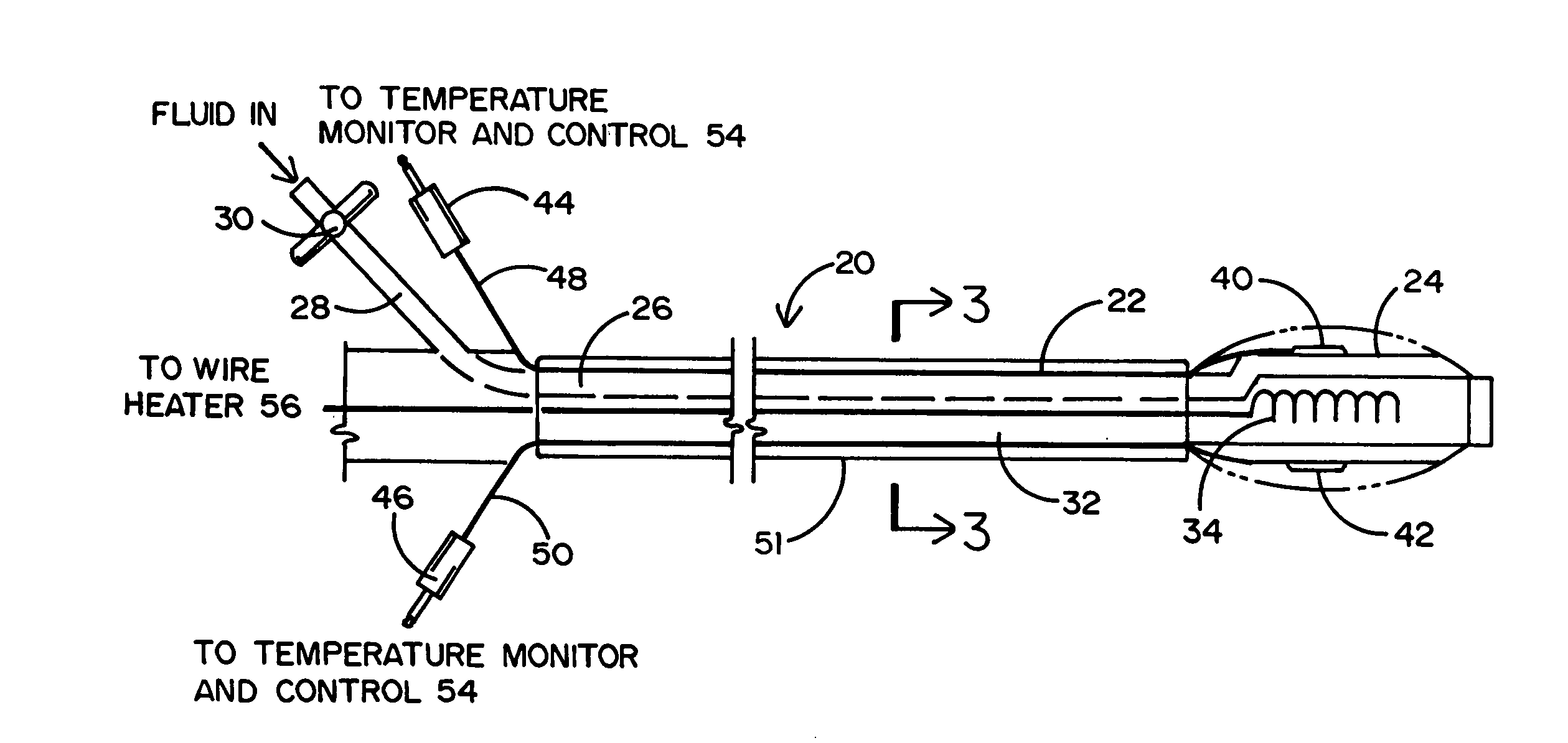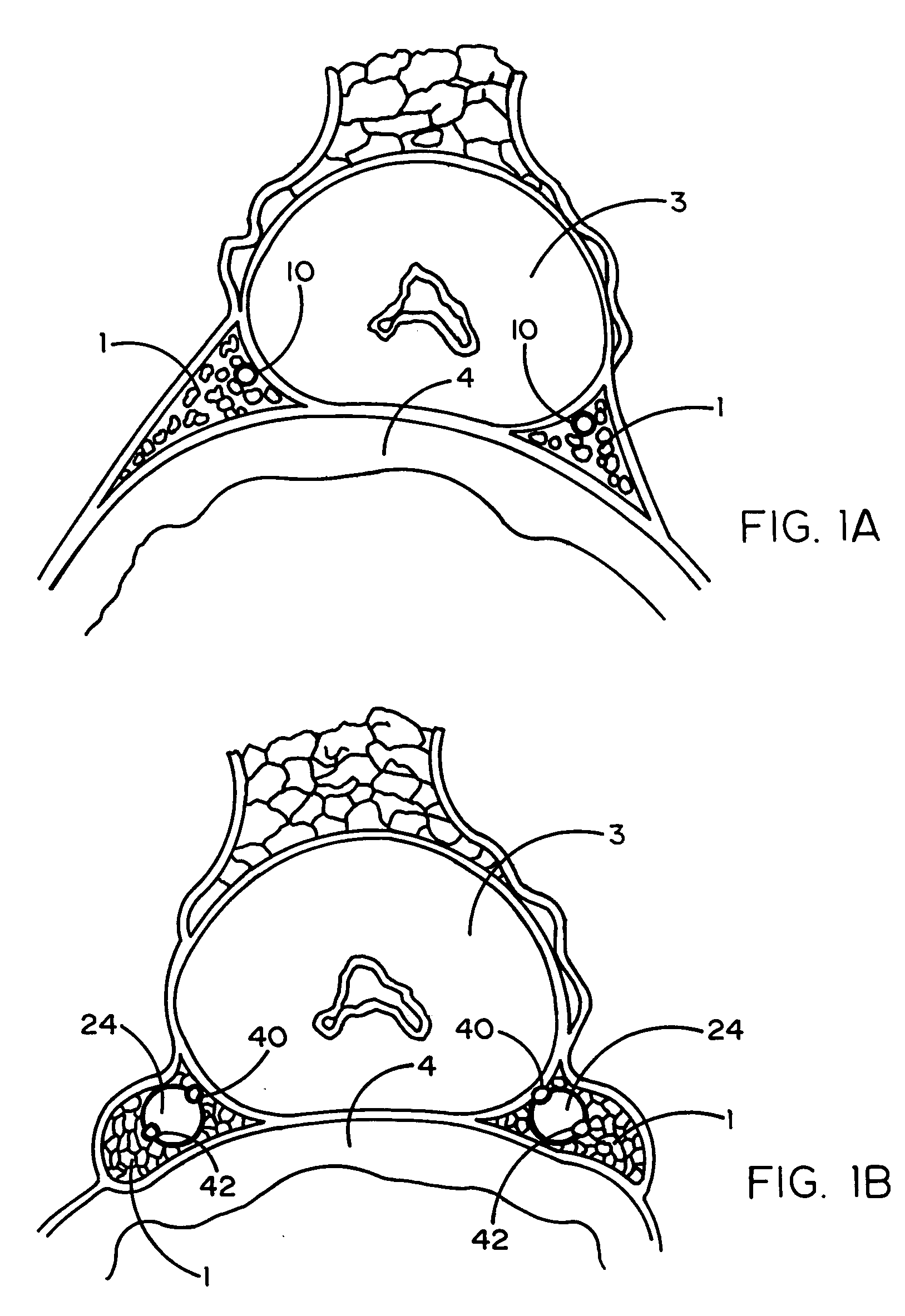Tissue protective system and method for thermoablative therapies
a tissue protective system and thermoablative therapy technology, applied in the field of balloon catheters, can solve the problems of gland ablation, increased risk of male impotency, injury or destruction of one eye, etc., and achieve the effect of protecting from possible removal or
- Summary
- Abstract
- Description
- Claims
- Application Information
AI Technical Summary
Benefits of technology
Problems solved by technology
Method used
Image
Examples
Embodiment Construction
[0021]Referring to the drawings, a portion of the human anatomy is illustrated in FIG. 1A to show the neurovascular bundles (NVBs) 1 located above the rectum 4 and attached to opposite sides of the prostate gland 3 in need of treatment for cancer. In order to preserve the NVBs 1 during a thermoablative surgical procedure, they must be moved off or dissected from the prostate gland 3. As will be explained in greater detail hereinafter, and as an important improvement to conventional minimally invasive thermoablative techniques, unique balloon catheters (designated 20 and 20-1 in FIGS. 2 and 2A) have a balloon 24 that is inflated between each of the patient's NVBs 1 and the prostate gland 3 so as to elevate, separate and spare the NVB off the prostate. By preserving and sparing the NVBs 1, sexual potency of the patient can be maintained following surgery. That is, the patient could be made impotent if the NVBs were to be surgically removed or damaged during thermal (or mechanical) abl...
PUM
 Login to View More
Login to View More Abstract
Description
Claims
Application Information
 Login to View More
Login to View More - R&D
- Intellectual Property
- Life Sciences
- Materials
- Tech Scout
- Unparalleled Data Quality
- Higher Quality Content
- 60% Fewer Hallucinations
Browse by: Latest US Patents, China's latest patents, Technical Efficacy Thesaurus, Application Domain, Technology Topic, Popular Technical Reports.
© 2025 PatSnap. All rights reserved.Legal|Privacy policy|Modern Slavery Act Transparency Statement|Sitemap|About US| Contact US: help@patsnap.com



